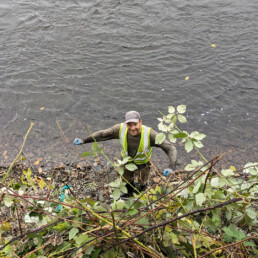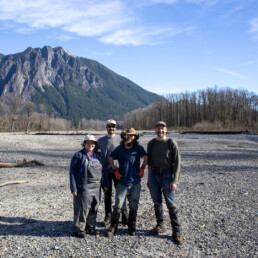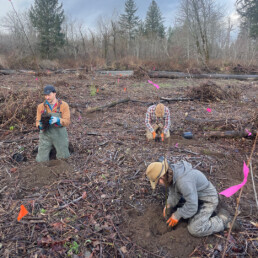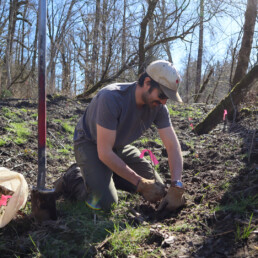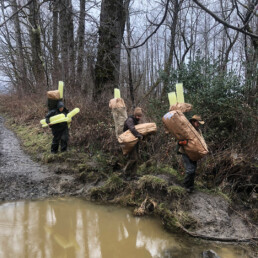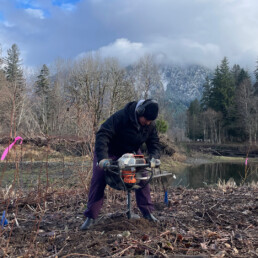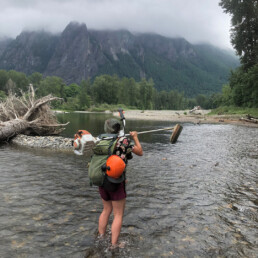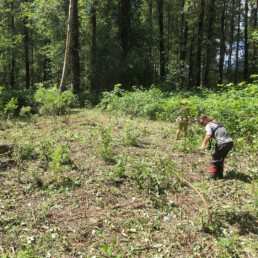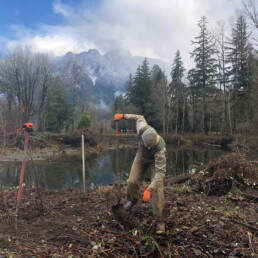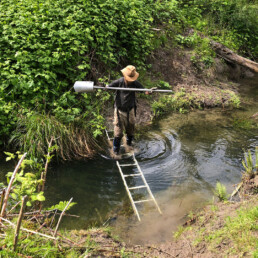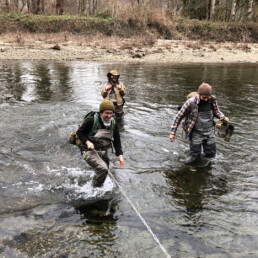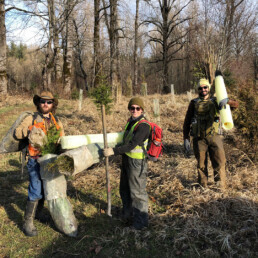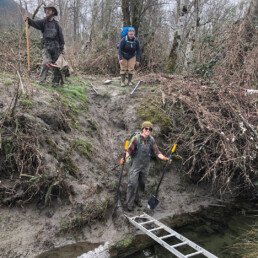Reviving Riverbanks
Exciting achievements stem from extraordinary ambitions.
After three years of steadfast commitment from Oxbow’s Conservation Team, we are proud to report the successful planting of 11,000 native plants across five unique sites in the Three Forks area at the confluence of the Snoqualmie River. This massive undertaking has transformed 10 acres of riparian terrain, benefiting both our human and wildlife neighbors downstream by protecting water quality, improving habitat health, and preventing property damage.
This project is our most extensive restoration endeavor to date, pushing us to new limits on multiple fronts—grant writing, funding acquisition, acreage covered, logistical hurdles overcome, and the sheer number of native plants reintroduced to once invasive weed-covered riverbanks. Frankly, we are proud! And we’re not alone. Our success is a collective effort shared with numerous organizations, agencies, and landowners dedicated to environmental health.
Ecosystem advancements stem from exceptional allies.
Reaching these milestones was a collaborative venture with community partners led by King County’s Noxious Weed Control’s Riparian Team. Their work in the Middle Fork area began in 2005 with knotweed control, inspired by a dedicated group of landowners who needed help addressing the relentless knotweed issue that was taking over riverbanks ever since the 1900’s, with control efforts ongoing since 2005. The noxious weed is famously difficult to control because of its rampant vegetative spread through roots, stems, and rhizomes, with even tiny pieces able to generate new growth. When plant fragments fall into the river, they create new downstream infestations, forming dense monocultures that alter natural ecosystems.
The ecological harm caused by knotweed affects everything from fish and water to humans:
- Native plants are crowded out, disrupting the intricate food web and causing a substantial loss of biodiversity among plants, insects, birds, fish, and other wildlife
- Riverbanks are destabilized, leading to soil erosion and increased sedimentation, which deteriorates water quality and makes areas more susceptible to flooding, further accelerating the spread of knotweed
- Property values can drop by as much as 20% due to infestations, which cause root damage to pavement, drainage, and septic systems, coupled with costs of removal
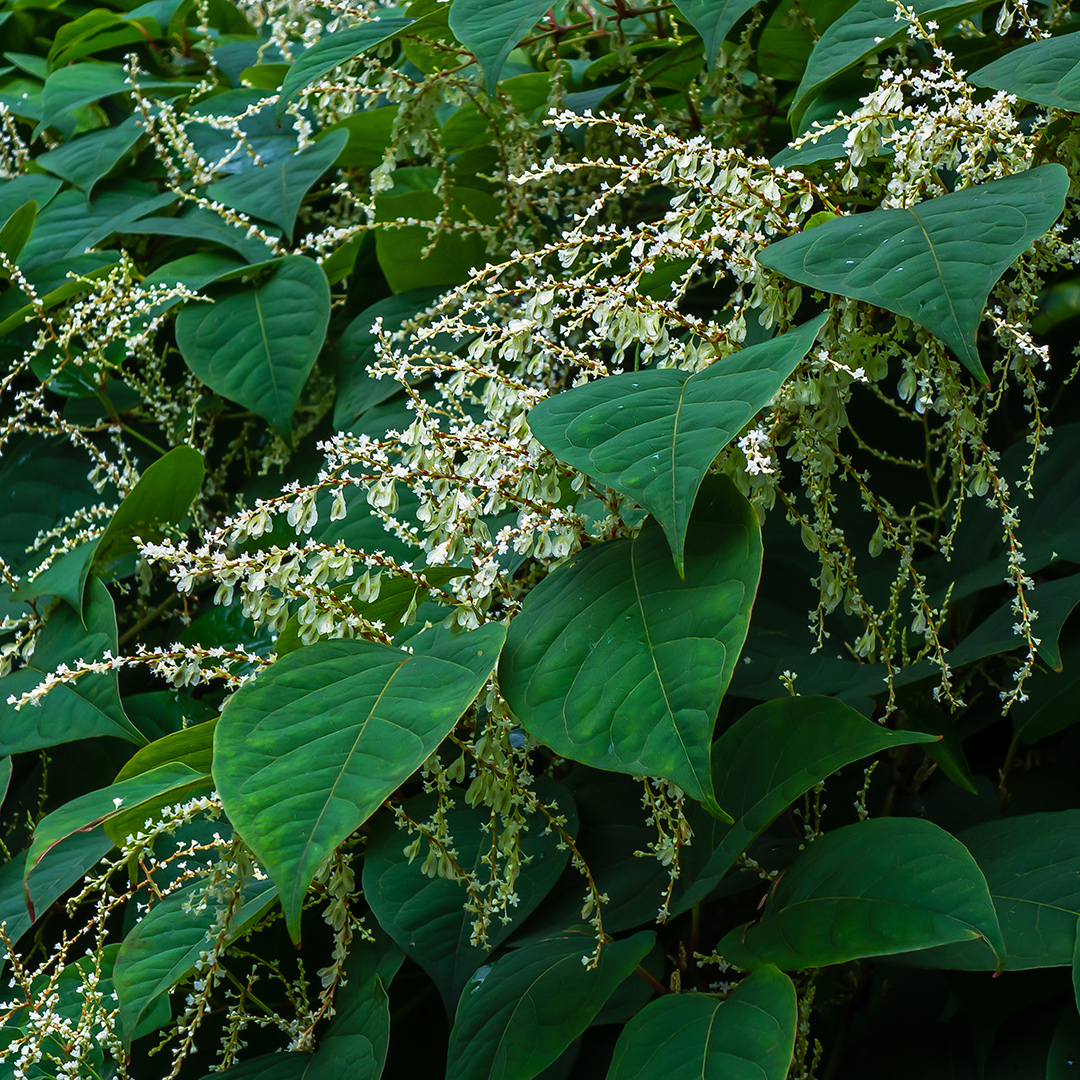
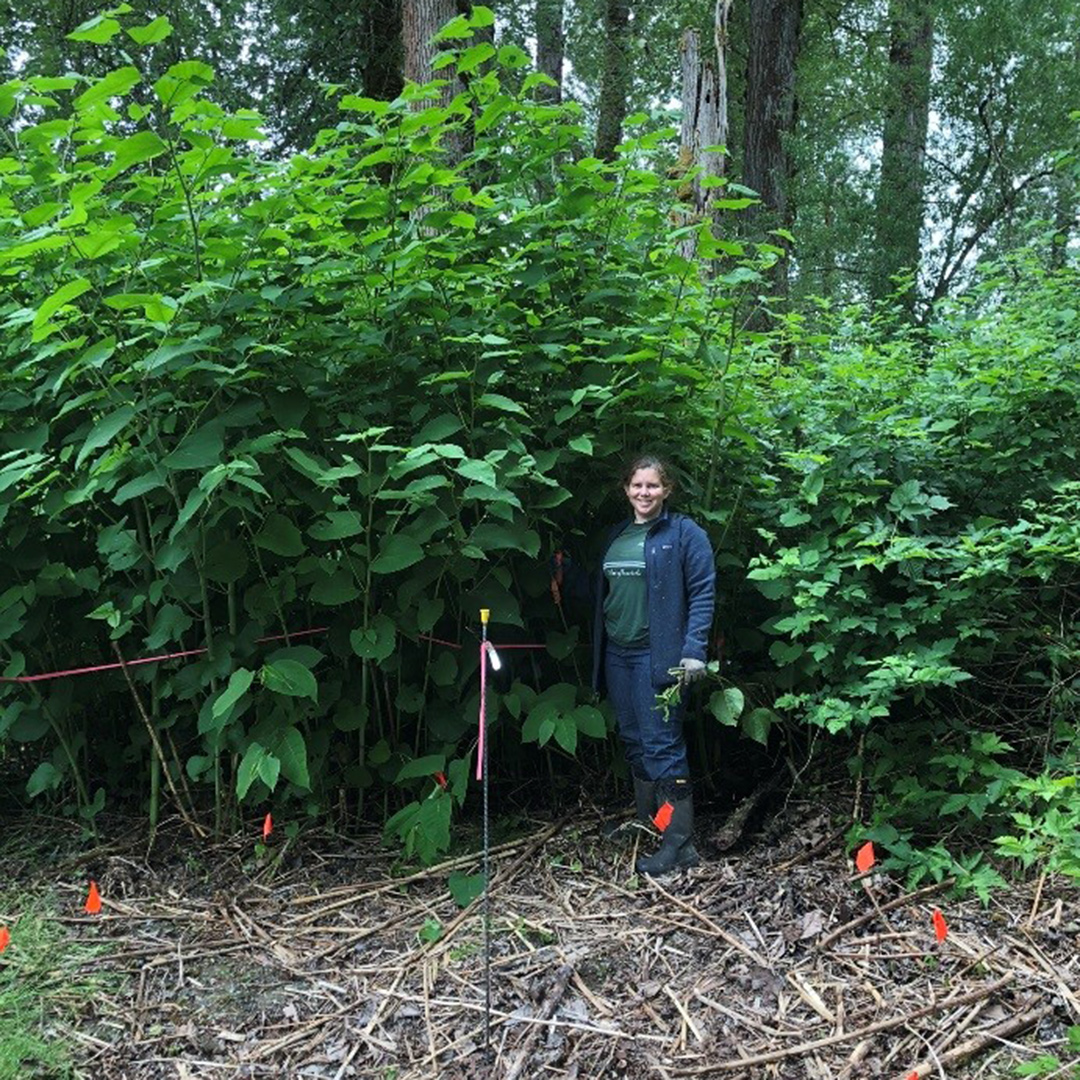
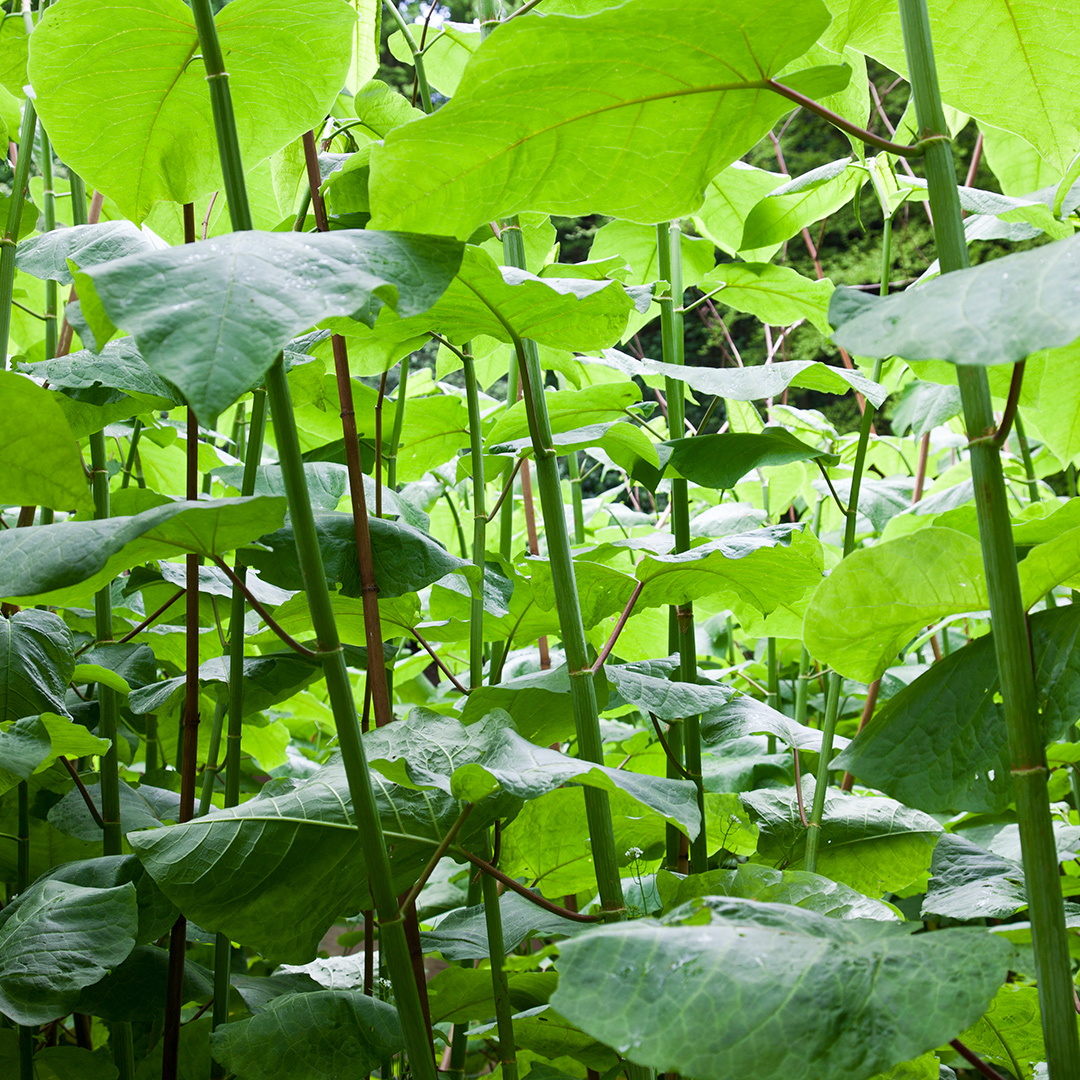
For nearly two decades, King County’s Noxious Weed Control Program (KCNWCP) has been working to address knotweed and protect our rivers. By building relationships with landowners, experimenting with and refining control techniques, and collaborating with local agencies to secure necessary resources, KCNWCP has expanded its efforts along the Green, Snoqualmie, Cedar, and South Fork Skykomish Rivers. Today, they monitor and treat over 120 river miles annually, managing knotweed and other invasive plants.
Oxbow is honored to be part of this massive community effort alongside the KCNWCP, Snoqualmie Tribe, Mountains to Sound Greenway Trust, Stewardship Partners, Sound Salmon Solutions, King County Parks, the cities of North Bend and Snoqualmie, the Washington State Department of Ecology, King County Flood Control District, the Snoqualmie Watershed Forum, the Snohomish Basin Knotweed Working Group, and others working to replace extensive infestations with healthy floodplain forests.
Our success story wouldn’t be complete without sharing the setbacks.
Oxbow’s involvement in the project started in 2020 through discussions between our Conservation Program Manager, Matt Distler, Ph.D., and Justin Brooks, Snoqualmie River Riparian Lead with KCNWCP. They saw that despite seven years of knotweed control efforts in the Three Forks area of the Snoqualmie River, KCNWCP couldn’t replant and fully restore these areas alone. Together, Matt and Justin identified the Washington State Department of Ecology’s Clean Water Act Section 319 Funding as a potential funding source. Then over three months, Matt crafted a project plan and comprehensive proposal with Justin’s assistance. The grant was submitted in October 2020 and awarded in mid-2021 to support their goal of improving water quality by restoring healthy native riparian vegetation.
By that point, knotweed in the Three Forks area was largely under control, but Himalayan blackberry and other opportunistic weeds began to re-invade, making further weed control and replanting necessary. Mowing with a BCS hand tractor proved to be our team’s favored strategy against invasive blackberries, but lack of road access to most of the sites required our team to tackle these blackberry thickets with brush cutters and manual root grubbing. Even getting the bare minimum number of plants and equipment to the sites involved an unusual level of logistical management. Our team faced access challenges at several sites, including over half a mile of densely forested cross-country travel and river crossings, which were made even more difficult when carrying heavy equipment and thousands of native plants.
We adapted to the logistical challenges by sourcing a canoe, finding safe wading and boat routes, learning to read river gauges, and using chains and cables for safer crossings. At first, hauling heavy gear to the sites was slow and exhausting, taking a toll on our small team. But we had some wins when we discovered better spots to stage gear, park, and cross the river, making our approach to the work sites much easier. Despite these improvements, it wasn’t always smooth sailing, but we kept pushing forward with our plantings.
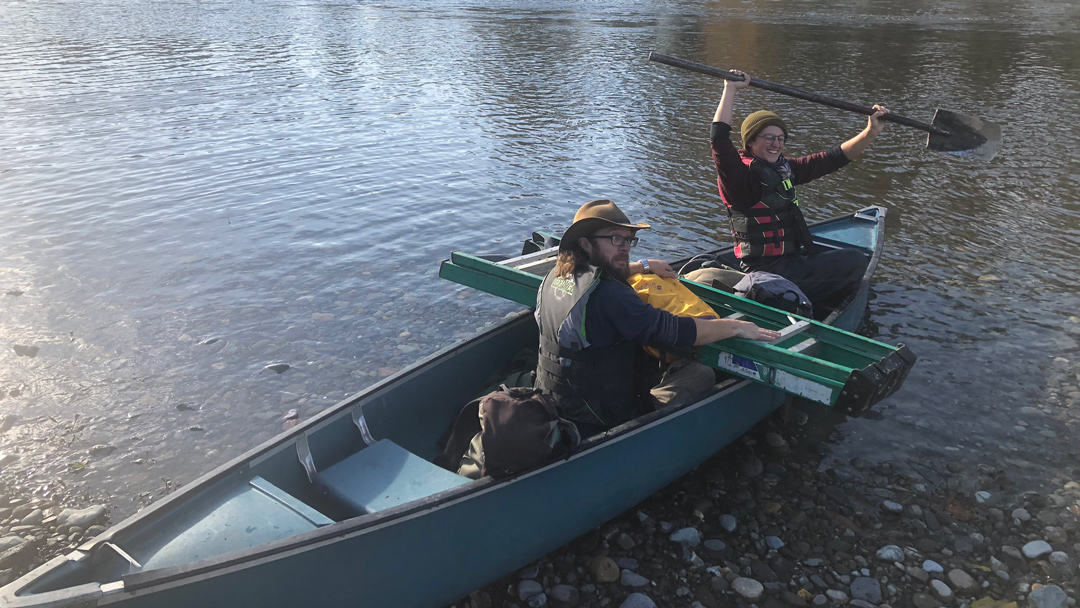
Our next set of challenges emerged when we realized that some of our restoration sites were attracting browsing elk. To protect the young plants and ensure their growth into a healthy forest, we experimented with various methods, from simple herbivory-protection tubes to 7’-8’ tall fencing. While these methods proved effective, the time and effort needed to transport over 2,000 lbs of fencing by boat and hand across the Snoqualmie River and then monitor and maintain these protections, especially in the face of harsh winter weather conditions, were exhausting. Despite this, we are pleased to report that elk damage has been minimal where cages have remained intact.
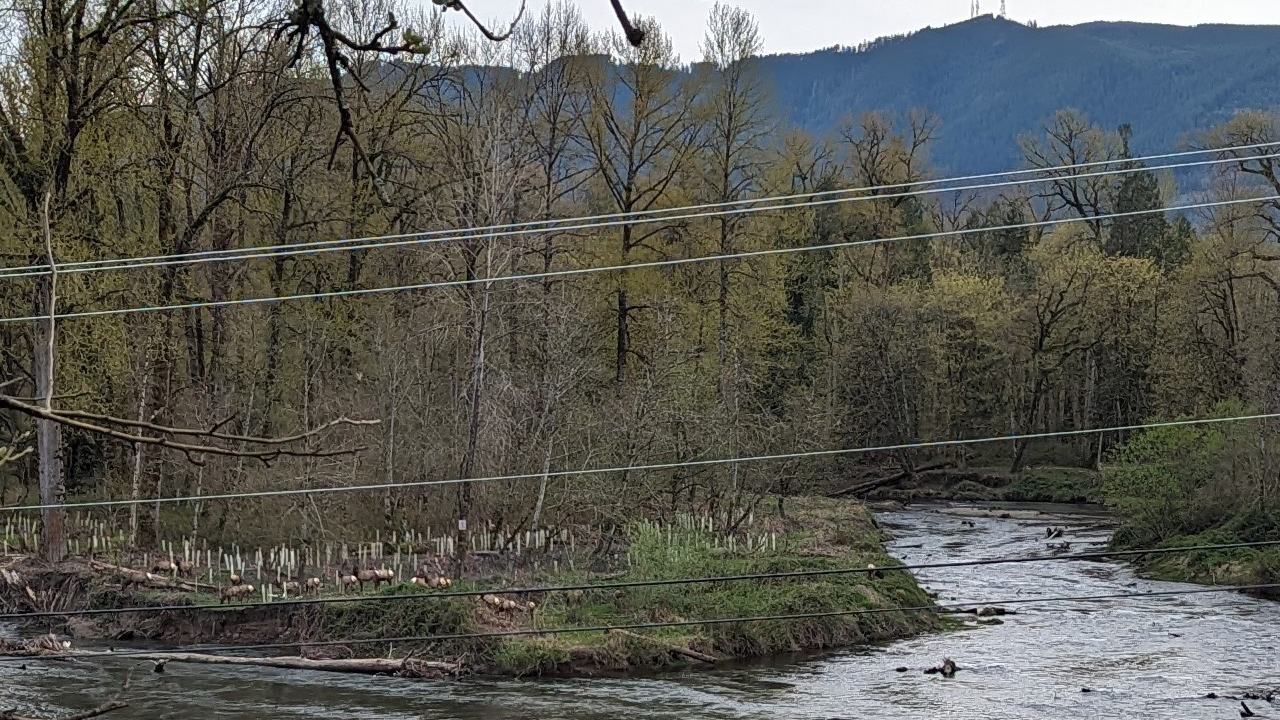
The struggles didn’t end there. During periods of heavy rain or warm winter days with high snowmelt, the river would rise to unsafe levels, completely cutting off the only routes to some restoration sites. Cold snaps with single-digit temperatures and lowland snowstorms created dangerous travel and work conditions, along with impenetrably frozen ground. There were moments when we began to doubt what we had signed ourselves up for.
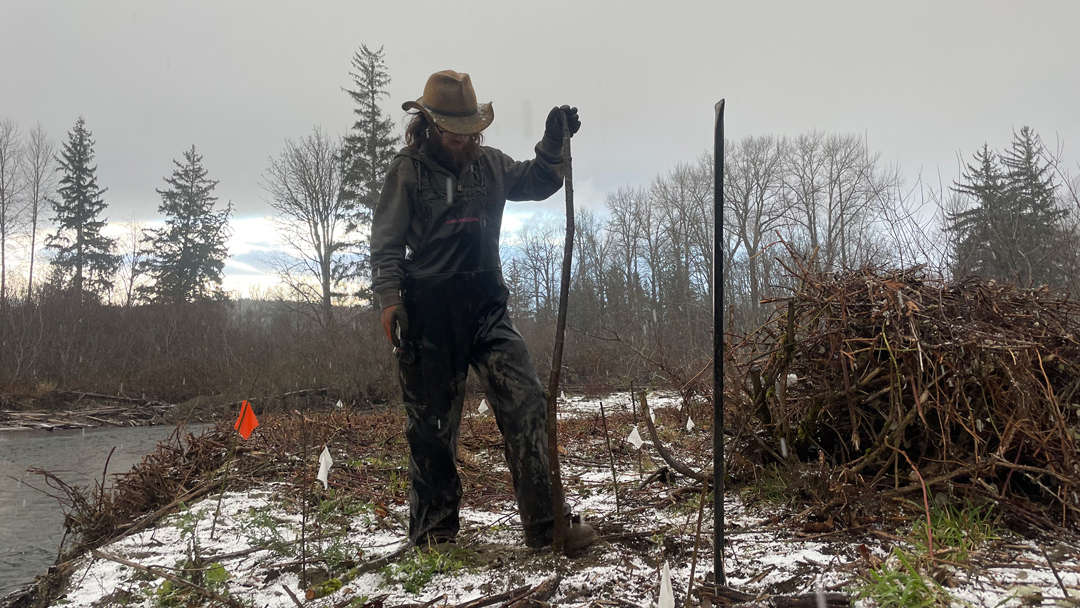
Our efforts are rooted in resilience.
Slowly but surely, the sun came out, the river lowered, our fingers thawed, and the days grew longer. The heavy lifting was over. Our tenacious team leaned into the challenges and supported one another through the hard times. By April 2024, we had successfully planted 11,000 plants on time, meeting our grant goal. Now, we’re breathing a collective sigh of relief and celebrating our big step towards more resilient river and stream ecosystems.
We’re not done yet. For the next 10 years, we’ll keep an eye on weed pressure, native plant survival, and canopy closure. We’re excited to see the benefits of our riparian restoration project ripple through the community and natural environment. We expect our recovery efforts will improve water quality by contributing to cooler temperatures, more oxygen, less pollution, stable riverbanks, and fewer fine sediments in the river. Alongside these aquatic benefits, we anticipate multiple ecological improvements, including increased biodiversity. Moreover, we hope our outreach efforts will encourage more people to take part in caring for the river.
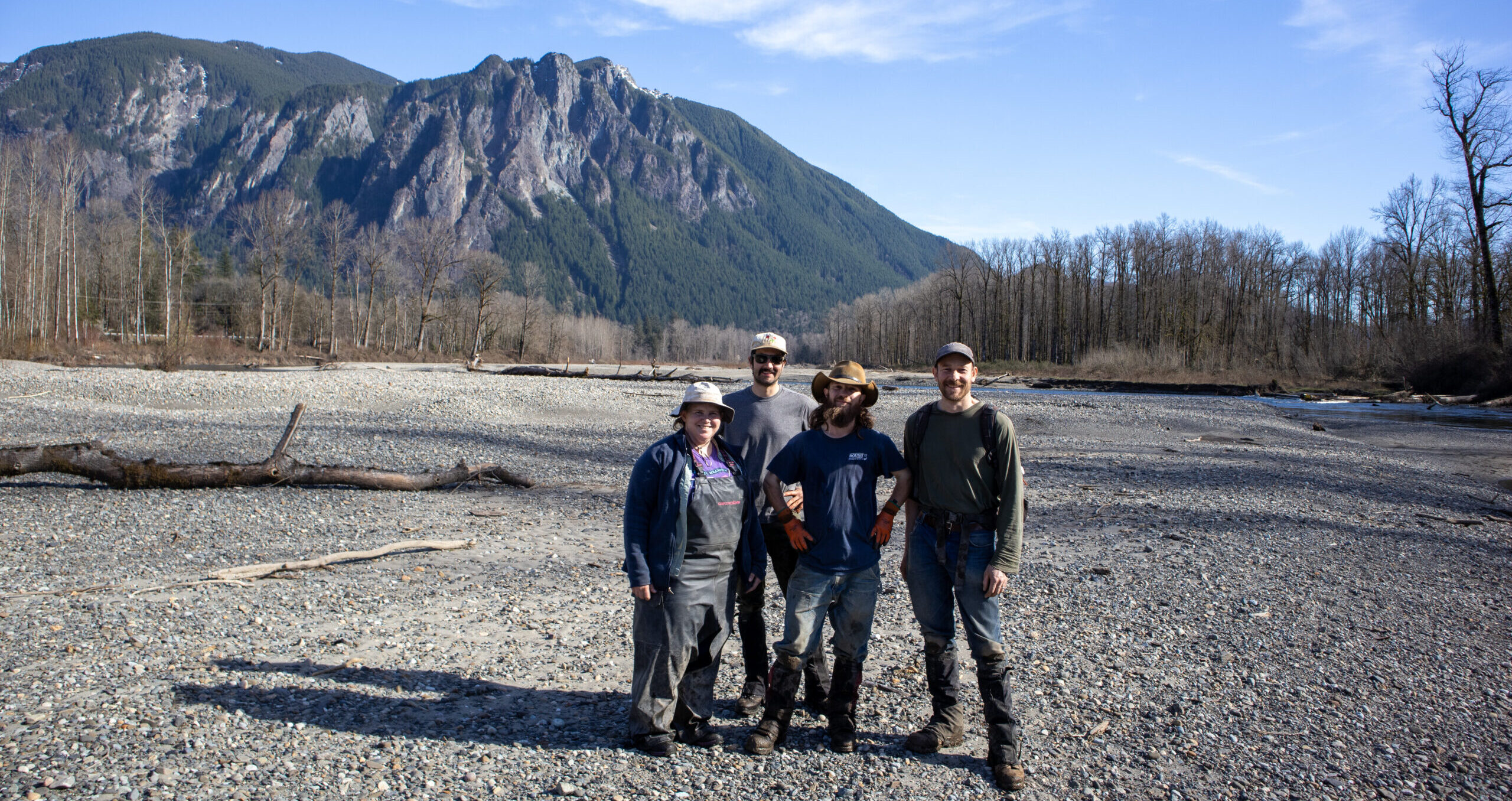
You can support ecosystem health.
- Learn how to identify knotweed and other invasive plants
King County offers several resources for best management and removal practices as well as noxious weed control classes. - Report a noxious weed in King County
They have a team of specialists dedicated to controlling regulated noxious weeds and can help formulate a control strategy for the weeds on your property for non-regulated weeds. - Volunteer
Join Oxbow’s Conservation Team on the 2nd Saturday of each month to improve critical habitats for plants and wildlife and help combat climate change. - Grow native plants and encourage your friends and neighbors to do the same
According to ecologist Doug Tallamy, “If half of American lawns were replaced with native plants, we would create the equivalent of a 20-million-acre national park, nine times bigger than Yellowstone or 100 times bigger than Shenandoah National Park.” - Support Oxbow’s work & mission
Donations help amplify environmental efforts at Oxbow and beyond.
Are you a streamside landowner in the Snoqualmie Watershed?
We are looking for collaborators for riparian restoration projects. Email matt@oxbow.org to get the conversation started!

